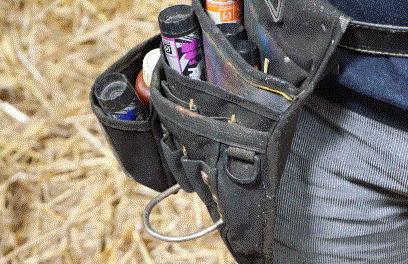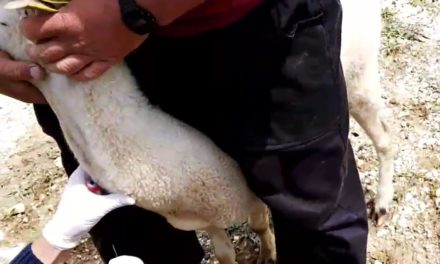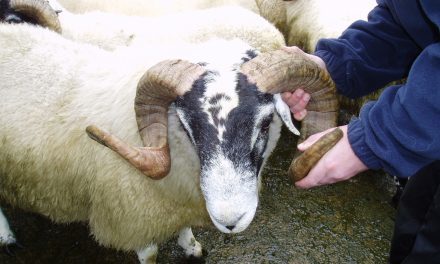This post is also available in:
![]()
![]()
![]()
![]()
![]()
Dairy or/and meat sheep: meat /dairy
Level of solution: practical
Aim: To schedule an ultrasound pregnancy scanning protocol and exploit the results
Description:
- Ultrasound pregnancy scanning should be done between approximately 50-60 days of pregnancy (50-60 days after ram removal) no later than 90 days.
- It is used to detect pregnancy and to determine the number of lambs being carried (single, twins, triplet…) and the barren ewes.
- Ewes with twins or triplets should be managed differently (better fields/grazing, housed in sheds, etc.) than single ewe.
- Barren ewes should be tested for disease/infection and eventually culled to reduce feed requirements.
- Alternatively, the barren ewes should have a transrectal ultrasound echography of the reproductive apparatus to decide the best therapy
Expected benefits:
- Scanning results will ensure good feeding management of the pregnant ewes
- Scanning results will give the opportunity to control the barren ewe and to make them pregnant.
- Scanning results improve grassland management
- Scanning results help the planning of lambings
- More benefits are expected for problematic farms
Prerequisites and/or limits:
Good technician for scanning, good management, farm facilities.
Farmer/farm able to manage the animals according to the scanning results.
Tips & tricks:
- Smartphone recording tool
- Home-made adaptation of echograph terminal
- Portable trolley to perform ultrasound scanning
- Mobile darwer to perform ultrasound scans
- Use of technology for productivity
Scientific Basis:
Jones, A. K., Gately, R. E., McFadden, K. K., Zinn, S. A., Govoni, K. E., & Reed, S. A. (2016). Transabdominal ultrasound for detection of pregnancy, fetal and placental landmarks, and fetal age before Day 45 of gestation in the sheep. Theriogenology, 85(5), 939–945. https://doi.org/10.1016/j.theriogenology.2015.11.002
Petrujkić, B. T., Cojkić, A., Petrujkić, K., Jeremić, I., Mašulović, D., Dimitrijević, V., … Beier, R. C. (2016). Transabdominal and transrectal ultrasonography of fetuses in Württemberg ewes: Correlation with gestational age. Animal Science Journal, 87(2), 197–201. https://doi.org/10.1111/asj.12421
Scott, P. R. (2012). Applications of diagnostic ultrasonography in small ruminant reproductive management. Animal Reproduction Science, 130(3–4), 184–186. https://doi.org/10.1016/j.anireprosci.2012.01.013
Fridlund, C., Humblot, P., Båge, R., & Söderquist, L. (2013). Factors affecting the accuracy of pregnancy scanning in ewes. Veterinary Record, 173(24), 606–606. https://doi.org/10.1136/vr.101935
Expected impacts:
|
Stakeholder Perception for Implementation of Solutions |
|||||||||||||
|
1. Level End-User Assessment (Partner) |
|||||||||||||
|
Country |
Italy |
||||||||||||
|
Partner |
Agris |
||||||||||||
|
Topic |
Gestation |
||||||||||||
|
Issue |
Pregnancy diagnosis: more information on benefits |
||||||||||||
|
Solution No/Name |
Timing and needs of a scanning protocol |
||||||||||||
|
Service provider/technicians+vet or farmers |
Advisors and farmers |
||||||||||||
|
Benefit |
|||||||||||||
|
Benefit expected |
fertility, better labor organization, better feed management |
||||||||||||
|
System |
|||||||||||||
|
Is the solution suitable for various production systems |
Y |
Precise the systems – all types define in the first survey |
|||||||||||
|
Cost |
|||||||||||||
|
What are the asset costs |
Costs are related to scanning |
500-1000 |
|||||||||||
|
What are the maintenance costs |
Costs are related to the work load and depend on the size of the flock |
500-1000 |
|||||||||||
|
Any limits to its applicability |
Good technician for scanning, good management and farm facilities |
||||||||||||
|
Work Load |
|||||||||||||
|
|
Farmers |
Service provider/tech.-vet-others |
|||||||||||
|
How much time is required to prepare and implement the solution |
>=1week |
||||||||||||
|
How many people is needed to implement the solution? |
A veterinarian |
||||||||||||
|
Timing |
|||||||||||||
|
How long it takes to get results? |
the length of the gestation |
||||||||||||
|
How long it takes to see an effect on sheep productivity? |
next production period |
||||||||||||
|
Equipment/Facility |
|||||||||||||
|
|
Farmers |
Service provider/technicians-vet-others |
|||||||||||
|
What kind of equipment/tool are necessary? |
scanning equipment |
||||||||||||
|
Skill/Knowledge-Training (farmer) |
|||||||||||||
|
Does the solution need any specific skill/knowledge or training? |
|||||||||||||
|
How much time will be required for training |
|
||||||||||||
|
Wider Environment |
|||||||||||||
|
Does the solution need any particular structure or organisation? |
An extension service system that compare data of different flocks may be useful |
||||||||||||
|
Other Comments |
|||||||||||||







